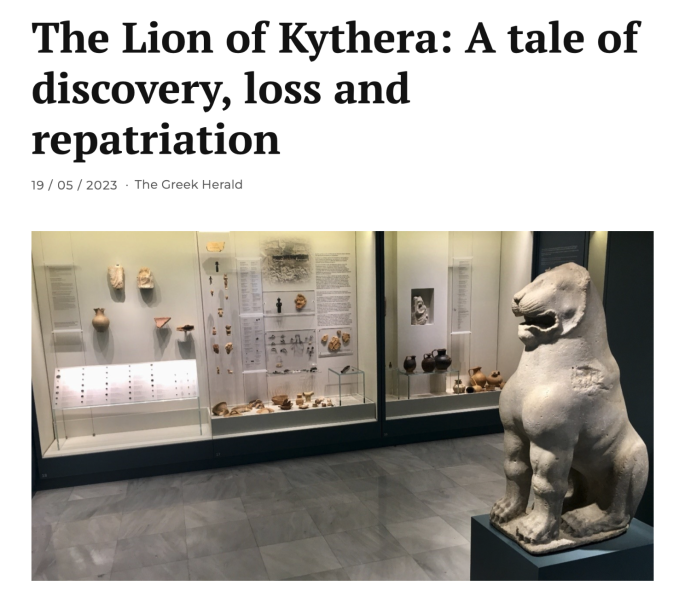The Lion of Kythera
© The Greek Herald.
For the full article click here.
By George Vardas
One of the most unique and well-known artefacts on display in the renovated Archaeological Museum of Kythera is a marble statue of a lion sitting on a plinth. How it ended up in the museum is a fascinating tale of discovery, loss and repatriation. The lion was a popular subject in Greek art during the Archaic period (about 700–480 B.C.). In antiquity it was considered a guardian beast and statues of lions were often placed in cemeteries to guard the deceased or to stand as sentinel on the pediments of temples to ward off evil. Kythera’s own archaic lion was unearthed in the early part of the 19th century at the ancient site of Kastri near Palaiopolis. It dates back to around the 6th century BC and is thought to be Laconian (or Spartan) in origin. In almost intact condition, the lion sits on its hind legs with its head facing forward and opening its mouth in a roar as if to warn off transgressors.
John Galt was a Scottish novelist and adventurer. In the summer of 1810, whilst travelling through the Mediterranean, Galt landed on Cerigo (as the island was then known) and eventually made his way to the old Venetian fortress in Chora, which stood on the “brow of a lofty, abrupt, precipitous promontory”, where he found an English garrison “languishing for pastime”. Galt recorded his observations of Cerigo in a book entitled Voyages and Travels in the years 1810, 1811 and 1812. He wrote that two or three relics of antiquity may be discovered on the island and singled out a marble lion which had been placed on a pedestal in the castle (probably by French forces that briefly occupied the island after the withdrawal of the Venetian occupiers) and which was regarded by the Cerigotes as a “very worshipful thing”.
More:
https://greekherald.com.au/culture/history/the-lion-of-kythera-a-tale-of-discovery-loss-and-repatriation/
